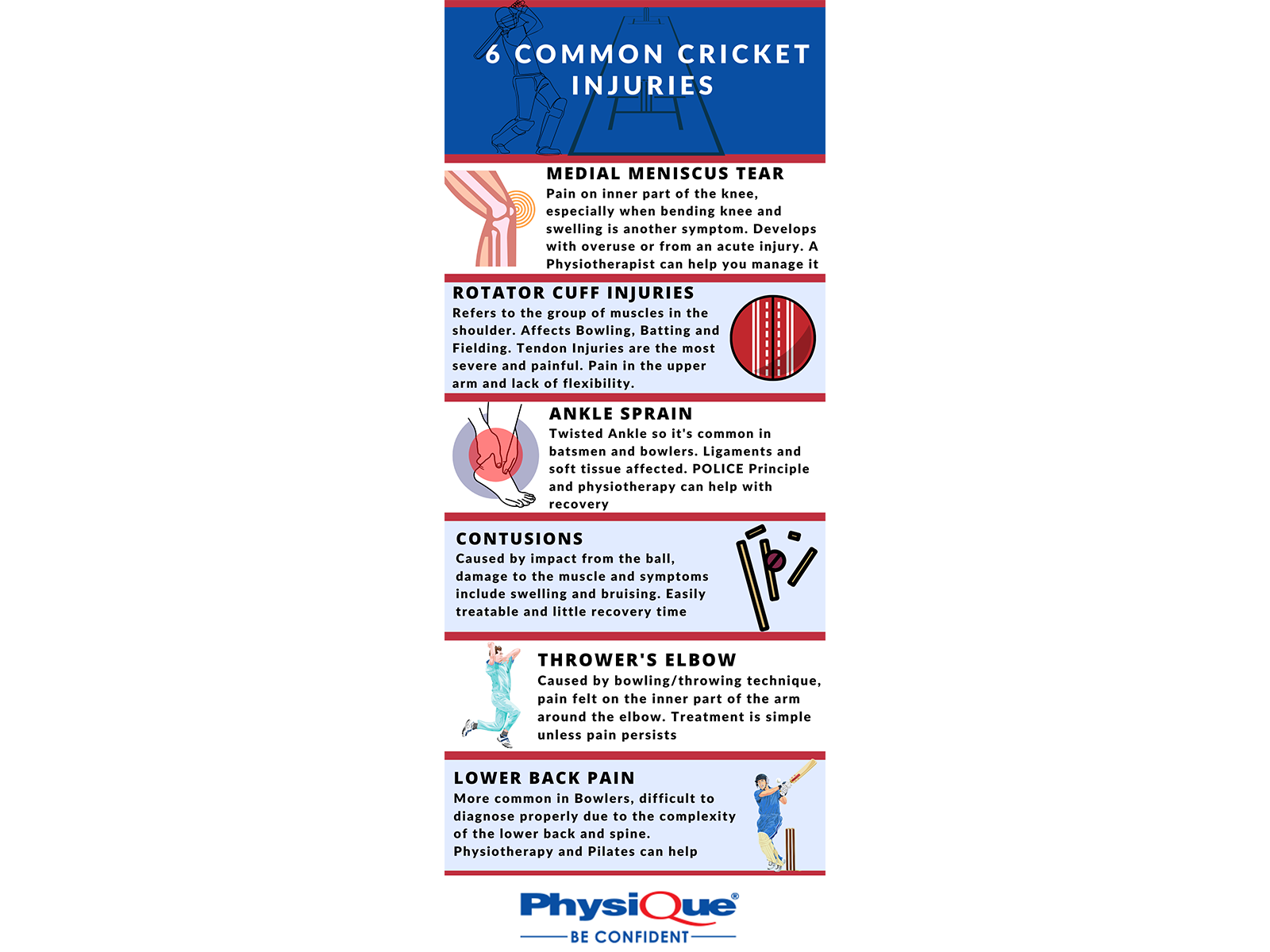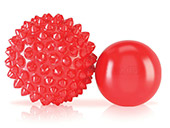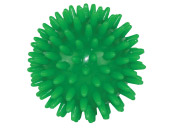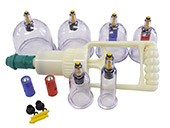Common Cricket Injuries
Our products are trusted by over 85 elite teams, including...
Top Cricket Injuries
Cricket is generally a lot safer than contact sports such as football and rugby but the range of roles a cricketer plays in each game means their bodies are still at risk of picking up a few injuries.
Cricket consists of batting, bowling and fielding (& wicketkeeping) so it is quite a diverse sport in terms of what players have to demand from their bodies. This means that there are both lower limb and upper limb injuries in cricket.

What are the most common cricket injuries?
The most common cricket injury reported by players was a hamstring strain [1] which, as you can imagine, can be caused by either batting, bowling or fielding because the hamstrings are used to put more force into anything that involves you swinging your arms.
The most severe is a lumbar stress fracture which is common in fast bowlers and has a long recovery time.
Out of all of the player roles in cricket; Bowling, fielding and wicketkeeping are responsible for most injuries although bowling was accountable for 41% of injuries [1]
The majority of the injuries in cricket are acute injuries (64%-76%).
How do I treat a Cricket Injury?
As mentioned above, acute injuries are the most common type of injury and these are usually a lot easier to treat than chronic or more serious injuries.
You should always try to seek medical advice so if you believe you have picked up a serious injury then it's best to speak t someone for qualified medical guidance.
In the case, that no one is around or you are unable to get proper medical advice, the POLICE principle or PEACE & LOVE are used as a guideline for treating acute soft-tissue injuries.
Here's a video from Northampton CCC about what's in a pitch-side sports first aid kit for Cricket.
How do I prevent Cricket Injuries?
Although cricket is a non-contact sport, it's still important to take the right measures for injury prevention. The most obvious way cricketers can prevent injuries is by using protective gear for batting and wicketkeeping.
Protective gear will help to prevent the majority of ball-related injuries such as contusions and fractures or serious injuries caused by impact from the ball.
Unfortunately, overuse injuries are very common in cricket as well, particularly with ball delivery such as bowling. [2] There's not much you can do to prevent bowling injuries besides working on bowling form by avoiding "mixed action" and extremely fast bowling.
Strapping joints with EAB will probably be the best way to avoid joint-related injuries such as ankle and knee injuries but should be avoided with the shoulder as it will restrict movement too much.
Strengthening and conditioning for cricket activities is also a good idea because it will help the muscles, ligaments and tendons which will hopefully reduce overuse injuries.
Here's the information from the infographic above, in a bit more depth
Medial Meniscus Tear - Pain on the inner part of the knee, especially when bending the knee and swelling is another symptom. This injury develops with overuse or from an acute injury. A Physiotherapist can help you manage it
Rotator Cuff Injuries - The rotator cuff refers to the group of muscles in the shoulder. These injuries are prevalent in Bowling, Batting and Fielding due to extending of arms. Tendon Injuries are the most severe and painful.
Pain in the upper arm and lack of flexibility. Please refer to our Rotator cuff pain blog post for more information on this injury.
Ankle Sprain - Also known as a twisted ankle, quite common in batsmen and bowlers due to how they have to extend the Achilles tendon and ankle. Ligaments and soft tissue are affected by an ankle sprain.
The POLICE Principle and physiotherapy guidance can help with recovery and rehabilitation.
Contusions - Contusions are caused by impact from the ball, there is damage to the muscle and symptoms include swelling and bruising. Contusions are usually easily treatable and have a short recovery time.
Thrower's elbow - Caused by bowling/throwing technique, the pain is felt on the inner part of the arm around the elbow. Thrower's elbow is sometimes misdiagnosed as Golfer's elbow or Tennis elbow. Treatment is typically simple unless pain persists for a few weeks.
Lower Back Pain - More common in Bowlers due to how the spine twists during bowling, it's difficult to diagnose properly due to the complexity of the lower back and spine. Physiotherapy and Pilates can help with recovery.
Sources and References
Pardiwala, D.N., Rao, N.N. and Varshney, A.V., 2018. Injuries in cricket. Sports Health, 10(3), pp.217-222.
Finch, C.F., Elliott, B.C. and McGrath, A.C., 1999. Measures to prevent cricket injuries. Sports Medicine, 28(4), pp.263-272.












Did you find this article useful?
Why not share this with a colleague, patient or friend?